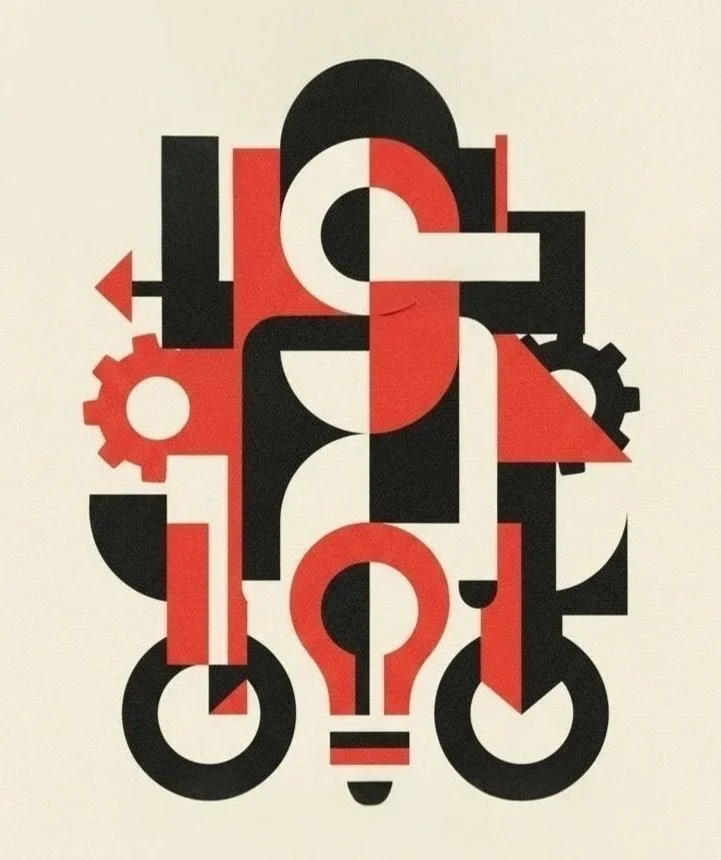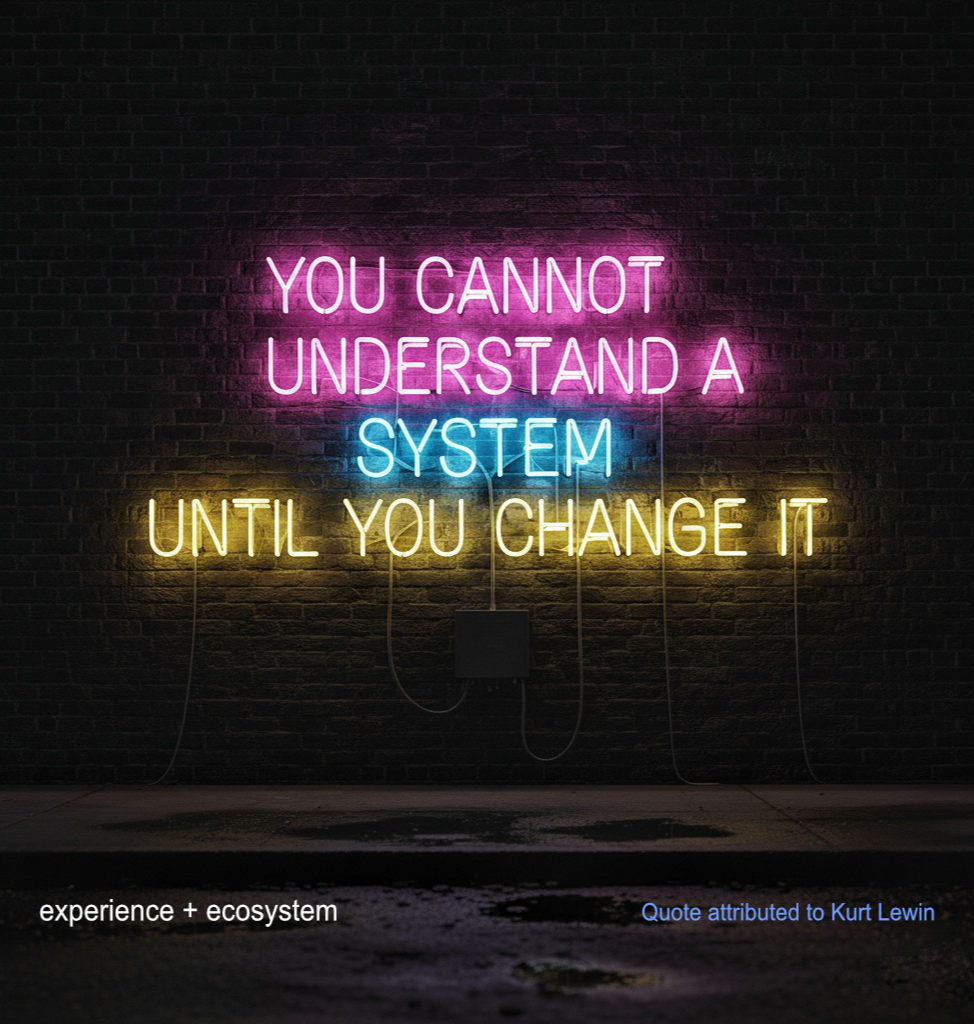The Case for Human Centered change
Embracing Human Centered Design as a Systems Thinking Innovation Catalyst
Every object exists in a context, in an ecology of problems and challenges.
Key to enterprise organization’s ability to respond to novel situations and challenges is empowerment through strategic activities that are not the planned output of traditional linear change models and delivery systems.
When framing problems and solutions we cannot isolate the challenge and serve the need. that’s traditional waterfall practices and reductive thinking. We must address the ecosystem and find solutions that fuel ecosystem complex dynamics. Don't ignore the externalities.
““From an early age we are taught to break apart problems, to fragment the world. This apparently makes complex tasks and subjects more manageable, but we pay a hidden, enormous price. We can no longer see the consequences of our actions: we lose our intrinsic sense of connection to a larger whole.” ”
The importance of systems thinking is not a new notion, and it can be second nature for designers and design thinkers. Thinking holistically allows us to create solutions that are not temporary fixes or first-order problem solving.
First-order problem solving focuses on addressing immediate issues without considering long-term solutions or systemic changes. While it can be effective in resolving urgent problems, it comes with several risks including creating solutions that address symptoms rather than root causes, leading to recurring issues. There’s also an increased likelihood of systemic risks by leaving the underlying system vulnerable. Second-order problem solving addresses root cause by identifying and addressing systemic issues, reducing risks for the future.
Human-Centered Design at its most impactful drives multidimensional change: behavioral, cultural, and experiential. Given the documented 70% failure rate of digital transformation initiatives, organizations should integrate HCD methodologies including behavioral and ethnographic research, systems thinking, design innovation workshops, and co-creation as core components of their transformation strategy.
Iterative UX prototyping and Co-creation are powerful tools for addressing systemic issues and second-order problems by emphasizing iterative learning, collaboration, and human-centered approaches. Prototyping allows teams to explore interconnected aspects of a system, identifying root causes rather than just symptoms. This aligns with systems thinking by focusing on understanding the broader ecosystem of a problem.
Field research and contextual inquiry can use prototypes in tangible real-world scenarios, offering valuable insights into user behavior and system dynamics. These insights help in designing solutions that are sustainable and impactful.
““On the one hand, behavioural science transforms how development work is conducted and programmes are implemented. I see it as a complementary tool that can work hand in hand with traditional methods — an innovation in the way challenges are diagnosed and entry points and improvements are identified. On the other hand, behavioural science brings on board the concept of experimentation and evidence-based testing to ensure that solutions are relevant and successful.””
HCD as a Transformation Catalyst
Human-centered innovation practitioners can serve as the futurists with the audacity to envision solutions by embracing system change through innovation. Key to having business impact requires building a team designed who embody change within an organization. The amazing opportunities that are driving change across all industries today includes a broad array of innovative technologies. They’re not only fueling the competitive desire for enterprise modernization, but most crucially the data intelligence and behavioral insights that can unlock potential of a transformation that is human-centered.
Empowering Teams for Creative Problem Solving
Unlocking innovation through three key principles.
This framework fosters a culture where teams thrive and create impactful solutions.
Enterprise teams need a new type of change leader - Human Centered Design Innovation Catalyst.
Scaling research and design practices to function as catalysts for organizational change requires a multi-phased approach with specific milestones:
Building trust through demonstration projects with measurable impact
Establishing repeatable practices with clear documentation and training
Developing a strategic capability roadmap focused on value delivery
Creating feedback mechanisms that demonstrate ROI while accelerating business outcomes
By implementing these specific approaches, organizations can transform their design practices from project-based activities into strategic capabilities that drive sustainable competitive advantage. I believe this is an inflection point for Human Centered Design.
When we fail to design, we design for failure.
— Bruce Mau
As the design community is well aware, enterprise-scale design teams can fall victim to the traps of organizational structures met to service the needs of the past. So, what are the positive signs that a company is changing into a dynamic, customer-centric organization obsessed with continual improvement?
Four Critical Factors to Unlock Organizational Change
Organizations frequently struggle to drive meaningful organizational transformation using traditional planning methods for several specific reasons:
Planning for adaptability: Many organizations approach transformation with rigid, single-path methodologies that prove incompatible with the dynamic nature of disruptive change. Successful organizations instead implement flexible frameworks that accommodate rapid iteration based on emerging insights.
Innovation Prioritization: Organizations often fail by not establishing dedicated innovation practices with appropriate resources and governance structures. Optimization-driven change models typically emphasize quarterly financial performance metrics over the sustained 18-36 month commitment required for transformative change initiatives.
Putting humans first: Humans are the essential vehicles of change. Transformation efforts falter when processes are not informed by the specific needs, motivations, and concerns of frontline employees who must embody the change. Resistance from key stakeholders, insufficient engagement across departments, and inadequate communication channels can derail otherwise promising initiatives.
Cultural Change: Organizational culture and legacy systems significantly influence transformation outcomes. Methodologies that fail to address cultural dynamics—including power structures, institutional memory, and unwritten rules—cannot effectively activate communities and typically stagnate before achieving meaningful impact.





